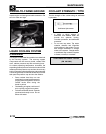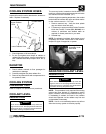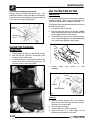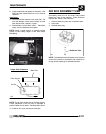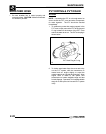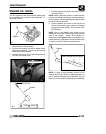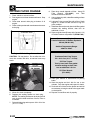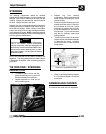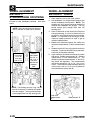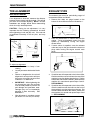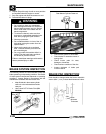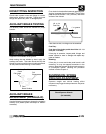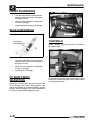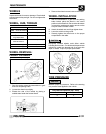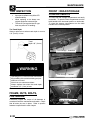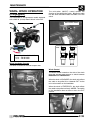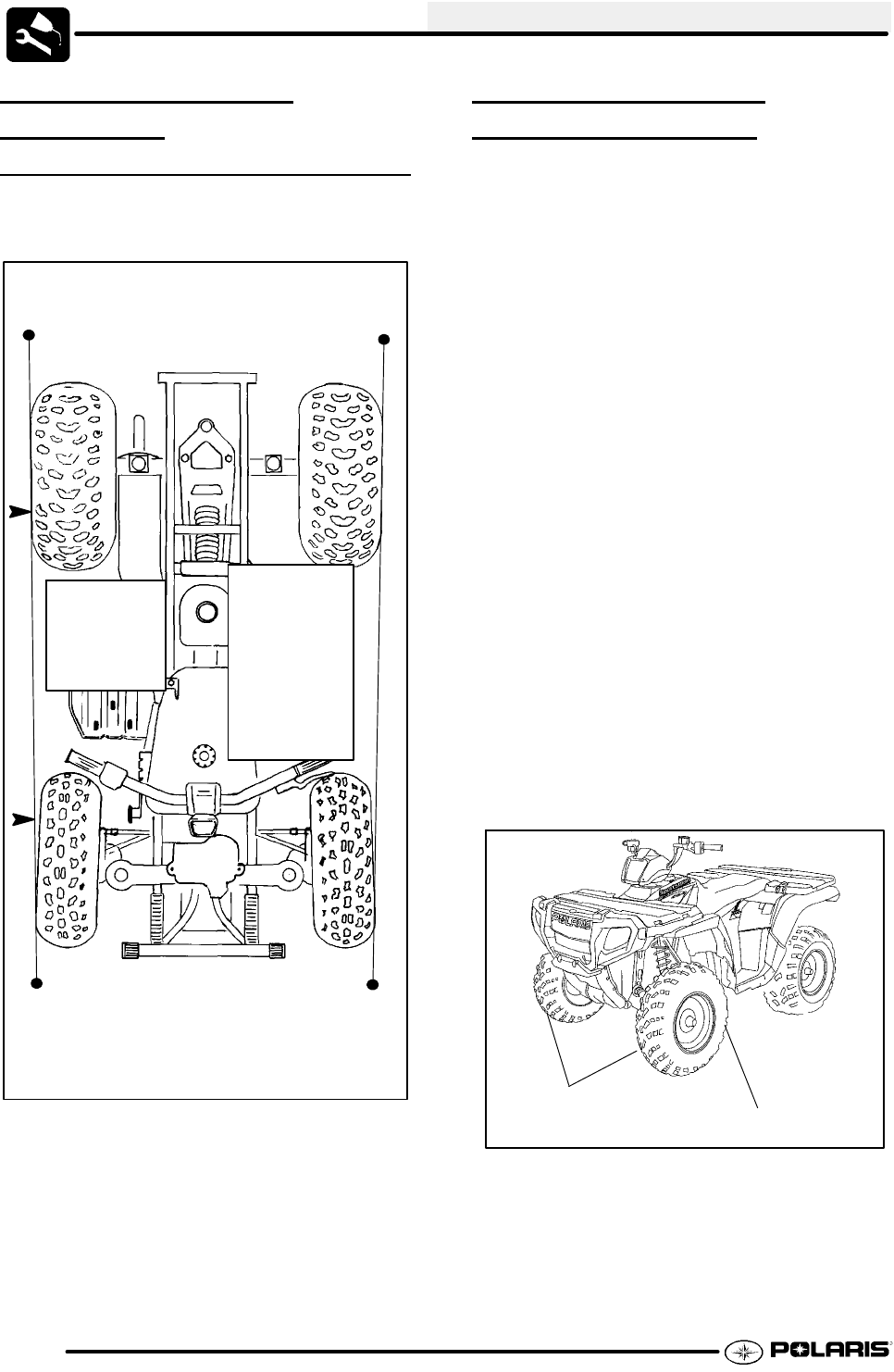
MAINTENANCE
2.26
WHEEL ALIGNMENT
METHOD 1:
STRAIGHTEDGE OR STRING
Be sure to keep handlebars centered. See notes
below.
NOTE: String should just touch side sur-
face of rear tire on each side of machine.
NOTE: The steering post arm “frog” can be
used as an indicator of whether the handle-
bars are straight. The frog should always
point straight back from the steering post.
Rear rim
measure-
ment should
be 1/16″ to
1/8″ (.2to.3
cm) more
than front rim
measure-
ment.
Measure
from string
to rim at
front and
rear of rim.
WHEEL ALIGNMENT
METHOD 2:
CHALK
1. Place machine on a smooth level surface.
2. Set handlebars in a straight ahead position and
secure handlebars in this position. NOTE: The
steering arm “frog” can be used as an indicator of
whether the handlebars are straight. The frog
should always point straight back from the
steering post.
3. Place a chalk mark on the center line of the front
tires approximately 10″ (25.4 cm) from the floor or
as close to the hub/axle center line as possible.
NOTE: It is important that the height of both
marks be equally positioned in order to get an
accurate measurement.
4. Measure the distance between the marks and
record the measurement. Call this measurement
“A”.
5. Rotate the tires 180° by movingvehicle forward or
backward. Position chalk marks facing rearward,
even with the hub/axle centerline.
6. Again measure the distance between the marks
and record. Call this measurement “B”. Subtract
measurement “B” from measurement “A”. The
difference between measurements “A” and “B” is
the vehicle toe alignment. The recommended
vehicle toe tolerance is 1/8″ to 1/4″ (.3to.6cm)
toe out. This means the measurement at the front
of the tire (A) is1/8″ to 1/4″ (.3 to .6 cm) wider than
the measurement at the rear (B).
Chalk Line
Measurement
“A”
Measurement “B”
Ill.1



